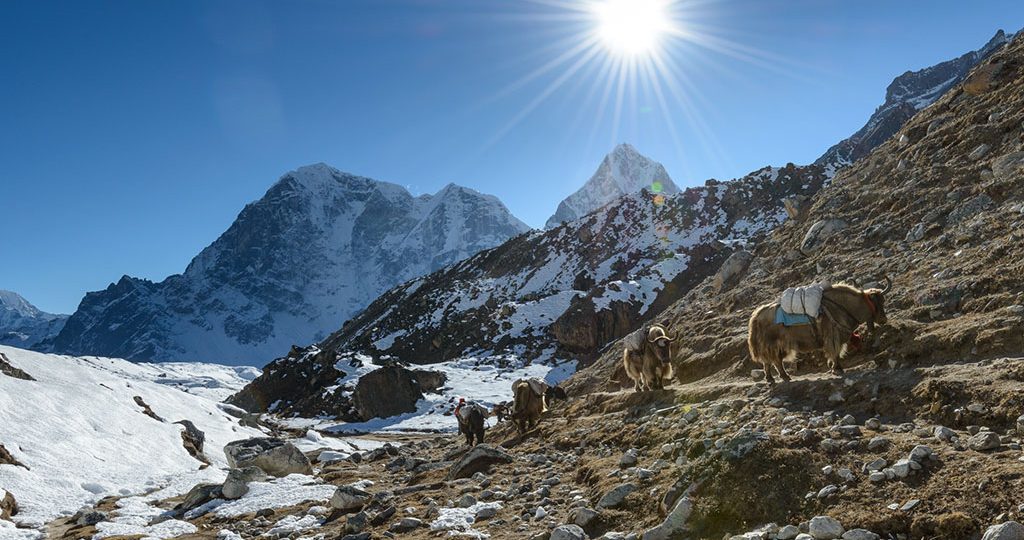Nepal, long celebrated as a trekking paradise, is rapidly changing. New roads are making once-remote regions accessible, shifting the landscape for adventurers seeking solitude. Yet, hidden away in the Himalayan foothills, there are still places untouched by the hustle of tourism.
Last night, I camped outside the farmhouse of Shanti Punn, nestled 9,000 feet high in the Gandaki province. A member of Nepal’s Magar community, Punn embodies resilience and a deep connection to nature. As the starlight faded, she stood silently on her terrace, absorbing the beauty of the towering peaks of Annapurna, Hiunchuli, and Machapuchare.
This morning, I sip masala chai on that same terrace, watching silver footpaths snake through the valley below. The Magar people walked here from Tibet in the 12th century, and for centuries, foot travel remained the only way to navigate these landscapes. But times are changing. Roads are reaching the Himalayas, bringing both progress and challenges.
The Road to Change: Nepal’s Evolving Trekking Landscape
The transformation of Nepal’s trekking routes is evident. In 2015, reaching Punn’s hillside farm from Pokhara required a two-day trek. Today, a newly built road has reduced that journey to just two hours. A similar change is reshaping the iconic Annapurna Base Camp trek—what was once a six-hour walk is now a quick 45-minute drive.
In Myagdi and Mustang districts, over 60% of the famed 145-mile Annapurna Circuit has been altered by road construction. While no immediate plans exist for a road to Everest Base Camp, a new track from Phaplu to Chaurikharka brings the country’s busiest trek within closer reach of vehicles.
Even the remote regions of Dolpo and Humla, once the last untouched trekking destinations, have succumbed to road development. As of 2024, these areas are now connected, part of a nationwide infrastructure boom led by Nepal’s so-called “bulldozer mafia.” Reports from 2018 estimated 83,000 earthmovers operating in Nepal, with many linked to politicians securing government contracts for road-building.
Balancing Accessibility and Tradition
For Nepal’s trekking industry, this rapid change presents a dilemma. While increased accessibility boosts local economies, it also threatens the pristine nature of the Himalayas. Roads make it easier for tourists to visit, but they also alter the very essence of the trekking experience.
Explorer and guide Pawan Tuladhar, along with social anthropologist Prabal Thapa, recently set out to find remote trekking routes still untouched by modernity. I joined them on their journey, marveling at landscapes that remain largely undiscovered. As we trekked, our local guide, Pridim, walked beside us in basic polyester clothing and knock-off sneakers—starkly different from our high-tech hiking gear. Yet, despite the lack of expensive equipment, he moved with ease, embodying the hardiness of the Magar people, many of whom serve in the British Army’s Brigade of Gurkhas.
The Social Cost of Progress
In villages along the way, locals expressed mixed feelings about the arrival of roads. Samjhana Adikhari, a resident, welcomed the change. “Before, we were remote, forgotten. Now, we will be connected to the nation. A road is like giving a sick man oxygen,” she explained.
Indeed, roads have brought undeniable benefits. In 2015, after devastating earthquakes destroyed homes, roads allowed for faster reconstruction. Trucks replaced mule caravans, transporting essential materials that enabled the building of earthquake-resistant homes. With better infrastructure, land value increased, and local economies began to flourish.
However, roads also bring commercialization and mass tourism. Mustang’s once-isolated villages, Jomsom and Muktinath, now see daily busloads of visitors. A newly built road to Manang has paved the way for luxury lodges in what was once one of the world’s most inaccessible areas.
Searching for Authentic Trekking Destinations
As we continued our trek, the conversation turned philosophical. Tourists often lament the intrusion of roads, yearning for an untouched Shangri-La. But can we deny the Magar and other Himalayan communities the same access to modern opportunities? Roads provide education, healthcare, and economic growth.
Thapa pointed out another consequence of modernization—the decline of “miteri,” a tradition where travelers were hosted in village homes, sharing meals and cultural exchanges. Roads may bring material progress, but they risk eroding centuries-old hospitality customs.
A Final Glimpse of Isolation
Our journey ended in the village of Lespar, where women bundled firewood under the watchful eye of a retired Gurkha sergeant. As we passed, he saluted—a reminder of the deep ties between the Magar people and military service. That evening, we sought shelter in a traditional teahouse, dining on momo dumplings and curried spinach by candlelight. It was a glimpse of Nepal’s trekking past, a moment frozen in time.
The next morning, the storm had passed, and we descended towards the valley. From a hilltop, I watched a lammergeier—a giant vulture with nine-foot wings—soar effortlessly over the Modi River. In minutes, it traveled farther than a trekker could in a day, a stark symbol of the contrast between old and new.
As we reached the road at Banaun, Tuladhar and Thapa looked triumphant. They had found a road-free trekking destination just two hours from Pokhara, a place where culture and wilderness still thrived. But as we wound our way down to the Kali Gandaki River, their optimism dimmed. Ahead of us, a fleet of yellow earthmovers stood idle, waiting.
Perhaps it had been too easy after all. For more news and travel stories, visit Coleman News.


